Finding food in the wild is one of the great survival challenges. Most of us are not all that good at setting snares and traps for small game and even fewer know much about foraging edible plants in the wild. We don’t actually admit it in so many words, but the average prepper has an expectation that they can live off of hunting big game, if they ever need to. While that’s an attractive-sounding idea, finding that big game to live off of is much harder than we think.
One of the most abundant sources of readily available food in the wild, besides insects and small game, is fish. If you can find water, there are likely to be fish swimming around in it. Catching those fish is much easier than hunting big game, making it a good fit for survival.
Here’s the problem though – the average “survival fishing kit” of two hooks, a bit of line and a bobber isn’t going to keep you fed for long. You know the kind of kits I’m talking about, the ones that can fit in a lipstick tube. These survival fishing kits seem to be made for an overnight survival exercise, rather than anything that might last for some time. The funny thing about that, is that most fishing gear is actually extremely light and not very bulky. So, it really wouldn’t be much of a problem to carry much more gear, without it overburdening us or filling up our pack.
Earn Your Food Independence NOW
I think part of this comes from what people consider to be a reasonable size for a survival kit. There are plenty of articles on the internet, talking about building a survival kit in an Altoids tin, or something of that general size. That doesn’t make much sense to me. My smallest survival kit is the size of a thick paperback book, say something by Tom Clancy and my normal survival kit measures 10” high by 8” wide by 9” tall and is worn on a cross-body strap. I take that hunting, fishing and hiking on a regular basis.
But size isn’t the only thing, as people still put these tiny survival fishing kits in their bug out bags, which are pretty much by definition backpacks. If people can’t fit more than a lipstick-sized fishing kit in their bug out bags, I wonder what they’re going to do for food, when the food they’re carrying runs out.
What’s in My Kit?
With this in mind, I’ve “reinvented” my idea of a survival fishing kit. While not perfect, I should be able to catch a lot of fish, keeping myself from starving. As a starting point, I’ve started by including the following basic fishing gear:
- Fish Hooks – I found a box of 100 assorted fish hooks, which is no bigger than a small box of wood matches of the type given out by restaurants and not weighing any more than that
- Fishing Line – 100 yd. roll of 12 lb. fishing line
- Bobbers – A dozen small bobbers
- Salmon Eggs- the heaviest thing in the kit, but good bait, just about anywhere
- Snap Swivels – a couple dozen, they hardly weigh anything and don’t take up much space
That takes care of the “standard” stuff. But it’s definitely not everything in the kit.
Wire Loom
This woven plastic sleeving is used to cover wires, usually run together in a harness, to protect them from rubbing in engines and other equipment. It is extremely lightweight and comes in a variety of sizes. I carry ½ inch and 1 inch, although other sizes will work too.
This is my system for fishing weights. Rather than carrying lead weights, I cut a piece of wire loom and fill it with pebbles, heat sealing the ends with a match or butane lighter, to keep the stones from falling out. I can make weights of whatever size I want, attaching them to a branch off my main line. The only drawback is that they are larger than lead weights; but that’s not usually a problem.
Fishnet
I’m not talking about a fishing net here, but just the fishnet material. One square yard of fishnet material can be used to make several nets. I have two yards, which can be cut and used in a variety of ways, including making a quick trap.
In order to use this fishnet as a fishing net, all I need is to cut a forked green stick. A section of fishing net can be woven over the forks of the stick, filling the “Y”. This can then be used to scoop fish directly out of the water or to scoop fish out of a trap you’ve built.
The fishnet can also be used to make a simple trap, anchoring it in several places in the water with sticks and forming an area to herd fish into. Make sure that the entryway for the fish is small, so that once they enter, it’s hard to find their way out. Then enter the water 20 or 30 feet away, walking towards your trap slowly and “driving” the fish before you.
Automatic Reels
The automatic reel is something commercially available in packages of anywhere from three to a dozen. They are best deployed together, covering an area of riverbank and increasing your chances of making a catch. Simple and without much line, they are designed to be attached to a tree limb overhanging the water, near its surface. The line is baited and allowed to hang in the water. Whenever a fish strikes, it reels in quickly, by spring pressure, setting the hook and holding the fish until you can check your lines.
A couple of important things to keep in mind when using these:
- Fish can pull the reel free from the tree branch, if the branch is weak or the reel isn’t attached firmly to it
- The fishing line is actually string, so you’ll want to attach a piece of clear line to it, as a leader between the reel’s line and the fishhook
- Be sure to put the reels in locations where it will be easy for you to reach them and net your fish
- The string (line) must be allowed to dry before packing the reels up, so that it doesn’t rot
Collapsible Fishing Pole
I don’t actually use this much, as you have to attend a fishing pole. There really isn’t time to do that when in survival mode. Nevertheless, collapsible fishing poles are about the size of a big pen, when closed, plus the size of the reel. They provide a means of fishing the normal way, without having to carry a lot of weight around.
Strips of Bright Cloth and Other Materials
The main thing that makes fishing lures work is that they attract the attention of the fish. Primitive fishing lures can be made by attaching small strips of brightly colored cloth and aluminum foil to a hook. What actual colors or combinations will work the best will depend on what sort of feed fish there are available where you are fishing. The idea is to make something that will look similar, so as to attract the fish’s attention.
Piece of Pool Noodle
Pool noodles are the simplest and cheapest bobbers you can find. A 4” piece of pool noodle weighs almost nothing and can be cut into smaller strips and pieces for use as bobbers. Pick a bright color, that you’ll be able to see easily on the surface of the water.
Building a Fish Trap
There are many different ways of building fish traps and many different materials that can be used. The key to any fish trap is a funnel-shaped opening for the fish to swim into, with a larger area behind the narrow end of the funnel, to act as a holding area for the fish. Once the fish are inside, it is difficult for them to see and find the way they came in; so they can’t escape easily.
Other than the idea of a funnel, the physical configuration of your trap will depend a lot on the fish you’re trying to catch. Before building it, you need to have an idea of what size fish you’re hoping to catch, so that you can make sure that the bars of the cage are close enough together to keep the fish from swimming through. Their size will also affect the construction of the funnel, which should be just big enough for them to comfortably swim through at the narrow end.
Streambed Fish Trap
The easiest way to make a fish trap is to drive a bunch of sticks into the streambed, forming ¾ of a circle. Then add the inverted funnel to make up the other ¼ of the circle. For greater efficiency, especially if you are going to herd the fish into your trap, add “wings” to either side of the funnel, effectively making it wider. Make sure that all the sticks are driven in well enough that a struggling fish can’t break through. If necessary, tie the tops of the sticks together with fishing line or long grass.
As an alternative to using sticks, the same can be done with rocks, assuming that there are enough rocks on the bottom of the stream to make the trap. It might take a little longer, but it will be sturdier.
Portable Fish Trap
A more portable trap can be made by weaving long grass through a framework of tied together sticks. Think a barrel, closed at one end and with the inverted funnel at the other end. The advantage of this sort of trap is that it can be moved from place to place, if it seems you’re not getting fish in the first place you try.
In order to make such a trap, start by making two circles, roughly the same size, out of green sticks. Attach the two circles together with more sticks, the same length, tying the ends of these new sticks to the two circles. Then crosshatch the bottom with a few more sticks. Then use long grass to weave between the sticks, creating the “drum.”
The other part of the trap is the inverted funnel. Again, this is made of two circles, formed of green sticks, with other sticks tied between them. The difference is that one of the circles is much smaller, while the other is the same size as the “barrel.” After weaving grass through the funnel, it will be ready to attach to the barrel.
Make sure that your attachment of the two parts is done in a way that makes it possible to take them apart easily and get the fish out. I use plastic coated wire ties for this, of the type that power cords are typically tied up with when you buy them. I’ve found that I can buy these in packages of several thousand, and carrying a couple of hundred in my kit provides me with an easy way of tying shelters and traps together.


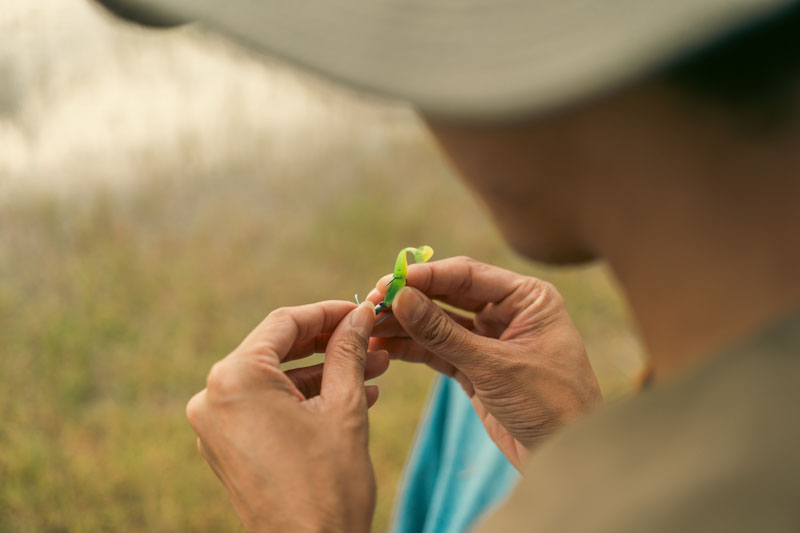

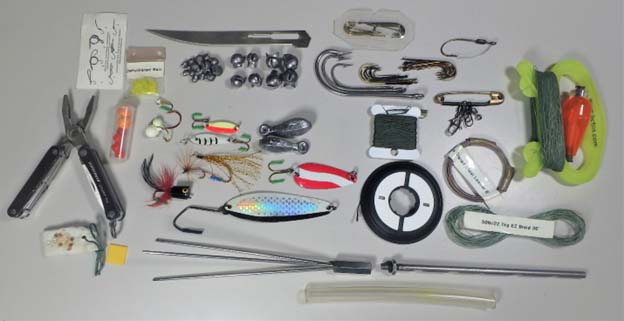
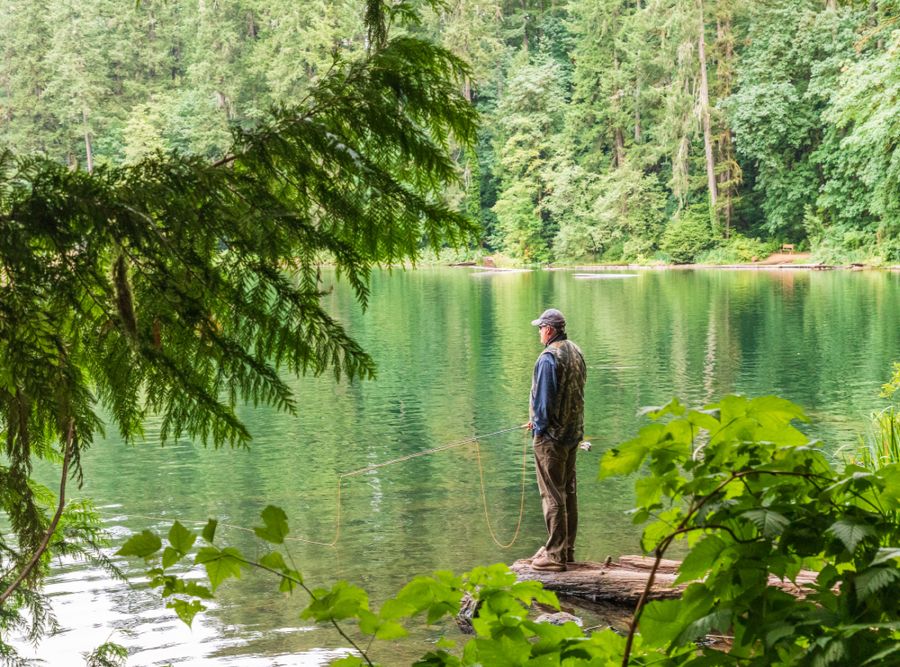
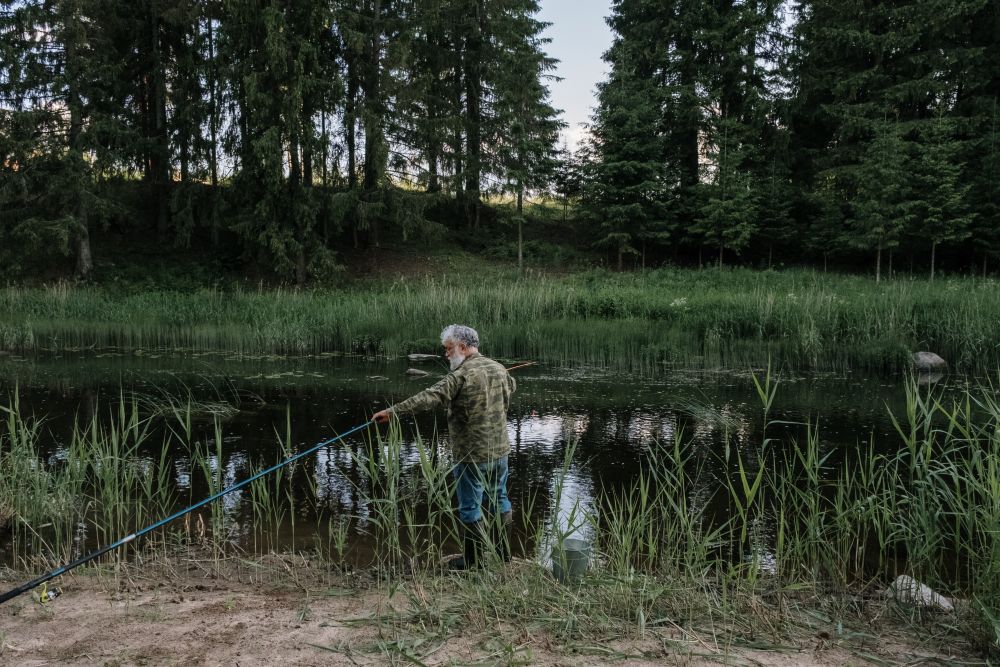
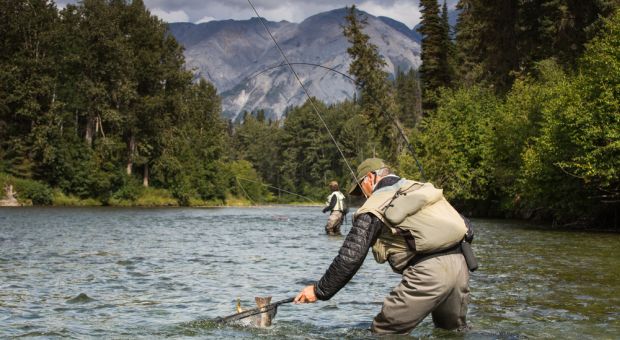


Clyde | September 27, 2023
|
I will not go fishing for sure if the SHTF!!!!!!!!!!
William Halford | October 7, 2023
|
Even if fishing means the difference between eating and going hungry, along with any potential health risks? It makes no sense to make an absolute statement like you made, especially if you’re applying that same absolute statement to a survival situation where you might not have a choice. Even if you might have other options at the time, you might run out of those other options. And even if you have other options that don’t run out, it’s really a good idea to make use of a variety of foods when possible, including fish if available, to get a variety of nutrition to stay healthy, to be less at risk of avoiding food intolerances, and more. Unless there’s some kind of allergy to fish (not likely, except for maybe shellfish), it makes no sense to say that. And putting 10 exclamation poibts doesn’t make what you said any more valid.
Wendell Knight | October 14, 2023
|
Why?
William Halford | October 29, 2023
|
Well so far, he hasn’t replied to either one of us. I’m thinking he doesn’t even know why.
Clyde | December 4, 2023
|
Alright, listen here. I know everyone’s first thought when the SHTF is to go fishin’, thinking it’s the perfect way to get food. But here’s the thing: I ain’t gonna be doin’ that, and let me tell ya why.
First off, when the world’s going to heck in a handbasket, every Tom, Dick, and Harry is gonna think of fishin’. That means our usual quiet fishin’ spots are gonna be as crowded as a dang Walmart on Black Friday. Too many folks fishin’ means scared off fish and not enough to go ’round.
Secondly, in a real rough situation, you gotta think about safety. Being out there in the open, by a pond or river, makes you an easy target for any troublemakers lookin’ to cause harm or steal what you got. In times like that, you gotta stay more hidden and protected.
And let’s talk supplies. Fishin’ might seem simple, but it requires gear – rods, reels, bait, and whatnot. If things are really bad, getting your hands on that gear or keeping it in good shape ain’t gonna be easy. Plus, fishin’ takes time, and that’s time you ain’t spendin’ fortifyin’ your home, lookin’ after your kin, or doing other vital tasks.
Lastly, dependin’ on one type of food, like fish, ain’t smart. Diversifyin’ your food sources is key in a survival situation. Relyin’ too much on fishin’ could leave you high and dry if the fish ain’t biting or if the waters get contaminated from whatever’s causin’ the SHTF situation.
So, no sir, I won’t be dependin’ on fishin’ when the SHTF. It might work for some, but for me, it’s about bein’ smart and stayin’ safe, and there are better ways to do that than standin’ by a river with a fishing pole.
Jackie Rodzinski | April 25, 2024
|
I don’t think that depending on anything is a wise choice in the survival situation. I believe if you were in this situation you’re going to exploit whatever resources you possibly can however, your point about being out in the open is well taken thank you for that. Many blessings, Jackie.
Jackie Rodzinski | April 25, 2024
|
People in starvation have been known to their shoes. I think in this kind of situation fish might be a welcome respite. Many blessings, Jackie.
Mark | September 27, 2023
|
I will most definitely catch fish in a shtf situation ,
But I live in the land of ten thousand lakes
Emily15 | September 28, 2023
|
Just because we’re in a survival situation doesn’t mean we should exploit resources without thinking about the long-term consequences.
William Halford | October 7, 2023
|
I don’t see anyone saying to “exploit resources”. But if Im in a survival situation and need to eat, I’m going to do what I need to do to eat. If there’s a place to catch fish and feeding myself means I need to catch fish, I’ll catch fish. And the same for hunting and trapping. Catching fish, hunting, and trapping to survive doesn’t necessarily mean exploiting resources. It means doing what’s necessary to survive.
Jackie Rodzinski | April 25, 2024
|
I completely agree with you. Survival situation is no time to consider exploiting resources… Thank you for your kind and courteous reply. Many blessings, Jackie.
Big Ken | September 28, 2023
|
My survival fishing kit is a travel pill organizer. It is a clamshell design with several compartments. So one compartment has swivels, one small hooks, one slightly larger hooks, one split shot, one tiny spoons, one has other small lures, a coil of braided fishing line, a couple styrofoam peanuts for bobbers, etc, My bait of choice is freeze dried shrimp, from the pet shop. Small, lightweight, near indefinite shelf life, just rehydrate with the water from wherever you are fishing. My little kit is packed full and is little more than half the size of a pack of cigarettes (I don’t smoke, but it’s a handy size reference)
Jackie Rodzinski | April 25, 2024
|
Thank you! This is another really great idea. Many blessings Jackie.
Leam | September 29, 2023
|
Trot lines only …. My EDC kit has thrity hooks, BB weights, 35 feet of 25# line for the hooks, and 25 feet of spectra 80# test for the cross line. Fits in a simple flash drive case in my cargo pants pocket. As for fish traps, you’ll need around fifty, if you really mean to fish for survival. Less than ten hooks or traps is an invitation to starve to death. It’s not weekend sports fishing.
scout | September 29, 2023
|
Automatic Reels are like trapping. you can set them and not have to keep watch on them. it frees up your time to do other things. one bit of warning, be very carefull abour when you set them not to trigger em, they will pull the hook up into your hand.
Clay | October 6, 2023
|
One other thing about automatic reels (sometimes called yo-yo’s by country folk).
You need to check them regularly or turtles will feast on the caught fish and leave you nothing but a fishead hanging on the hook. And once turtles discover your yo-yo’s they will quickly devour any fish caught on them.
Another point of interest is that anything that uses bait to catch fish depends on the fish being hungry or in feeding mode. A cast net will catch every thing in its path whether its hungry or not and with very little effort or time invested. The downside is they have weight and take up space in your kit. However, their efficiency more than makes up for those minor inconveniences.
Jackie Rodzinski | April 25, 2024
|
Thank you! I have never heard of these! Unfortunately, I do not fish much as I’m handicapped and fishing licenses are very very expensive. I’m not really a prepper either. I do enjoy reading about prepping very much, and this was the most informative tip. Many blessings, Jackie.
Keith A Lothrop | October 7, 2023
|
For bobbers, think disposable foam earplugs. They’re small, lightweight, and usually brightly colored. I take a long thorn or a hardwood twig about 1 1/2 to 2 inches long and drive it through the middle of the earplug (think of toasting a marshmallow), leaving a stub on the bottom end and the rest out the top. Tie the line to the stubby end.
The longer piece of twig will cause the bobber to lay on its side, even the slightest nibble will make it stand upright. If one earplug isn’t enough to keep the bobber on top of the water, just add more earplugs, This also works great when you’re fishing a brook or stream, toss your rig upstream and let the current float the rig back to you naturally.
Jackie Rodzinski | April 25, 2024
|
Thank you this is an excellent idea! I always carry earplugs with me… It helps me drown out my husband! Many blessings, Jackie
Neal Gimben | October 7, 2023
|
Vey good info.
Jackie Rodzinski | April 25, 2024
|
This is an excellent article. I shared it to my Facebook account. Thank you Jackie Rodzinski .